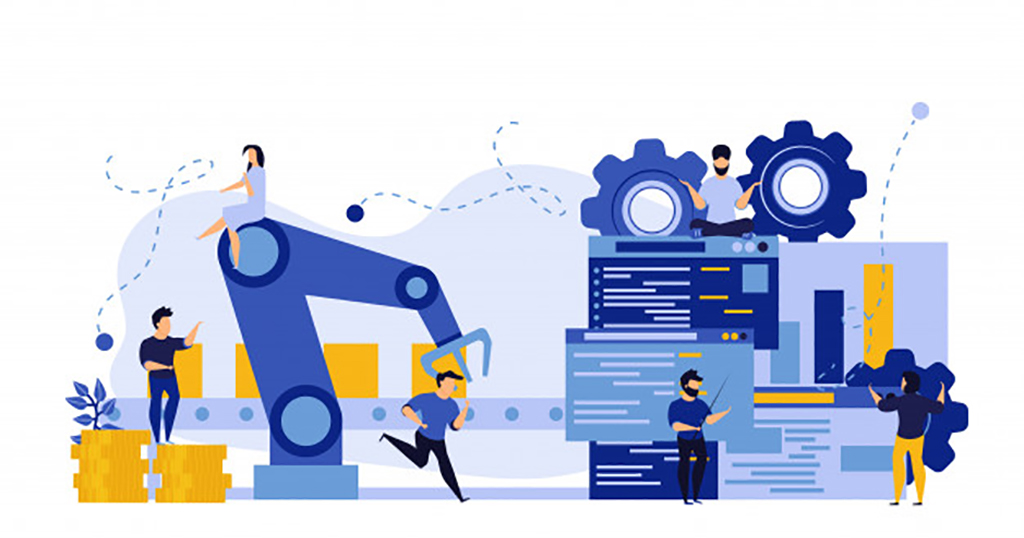Four LI Industry Trends That Dominated 2020
We are into a new phase of the industrial revolution, famously known as Industry 4.0. This new phase works on a connected ecosystem of processes that are aimed to simplify the operations and accelerate the overall production speed. It provides a series of advanced smart manufacturing solutions that are supported by technology, automation, cloud, data, and analytics.
![]()
This blog will take you through four such Industry 4.0 influenced LI trends that dominated 2020, and will continue to do so in the coming years as well.
1. Internet of Things (IoT)
Plant managers manually handle the complete manufacturing cycle. From workers, processes to the final product, everything asks them to remain on toes.
This is where the Internet of Things (IoT) changes the ballgame for the manufacturing industry. IoT lets a manager supervise and regulate the whole manufacturing process through a centralized system.
In place of strolling around the factory to gather updates, IoT captures every ground-level activity and presents it to the supervisor. It does so by adding sensors to all the devices including workers’ equipment and helmets. These sensors immediately communicate the real-time data to the supervisor over the internet. Upon receiving any alarming data or red flags, managers immediately take cognizance of the situation and implement preemptive measures to curb it.
![]()
Here are some other examples of how IoT helps a plant manager in handling processes,
- Detects and avoid the issues that may cause delays
- Uses cognitive operations to improve production quality
- Enables managers to better allocate resources
- Takes preemptive measures for any red flags
- Does thorough testing of the products
- Builds digital twins for feasibility checks
2.On-demand Geo-targeting
Getting the LI industry workers to show up every next day is a challenge. To avoid getting themselves in such a pickle every day, now light industrial companies are turning to geo-targeted hiring.
Geo-targeting allows companies to draw a digital fence around an area or region and target candidates falling in its ambit. In this case, the job ads are only shown to potential workers who reside in the nearby areas or inside the digitally marked fence. This narrows down the search and only attracts those workers who do not need to relocate or travel long distances for work.
Geographically targeting candidates increases the response rate of the job post and decreases the chances of no-shows on the day of joining. Such solutions allow companies to prioritize their talent search based on the candidates’ location and get the workers onboard quickly in place of losing workers and delaying projects.
![]()
3. ML-based Intelligence
On average, the US business loses $171,340 per year due to repetitive, mundane, and time-wasting tasks like searching for order numbers, processing papers, and calculating the value of orders.
ML eliminates these process redundancies by perfecting all the stages gradually with the collected data. Be it managing inventory, improving the supply chain, or implementing quality control, ML collects the data and forecasts the next series of occurrences in advance.
Predictive maintenance has been one of the major areas where ML data has largely helped. Earlier, engineers invested a lot of their time to test and schedule equipment maintenance. ML algorithms lifted off this burden by predicting the equipment breakdowns before they occur and scheduling their maintenance accordingly. This is one of the reasons why ML is one of the persistent trends for the past few years and would continue to do so in the coming years as well.
![]()
Read More: Five Ways Artifical Intelligence Will Ease the Life of Recruiters
4. Direct Sourcing
Working with contractual labor isn’t breezy, especially if you are working with third-party hired workers. A lot of times, third-party vendors don’t set the expectations right or miscommunicate the requirements. This inversely affects the efficiency of the manufacturing process and causes money and productivity loss.
A direct sourcing platform is a solution to this staffing roadblock. It eliminates the dependency on any third-party recruiters, and instead, gives the LI industry total control of the recruitment. It allows companies to build their private talent pool and tap into it when catering to ad-hoc and urgent talent requests.
Read More: Things to Keep In Mind While Planning a Direct Sourcing Strategy
Today, most of the direct sourcing portals available in the market are utilizing Artificial Intelligence to integrate automation and intelligence into their talent sourcing, screening, and hiring processes. As a result, tech-led sourcing platforms are helping LI industry to hire better, faster, and economical talent for their requirements. Upwork, TalentDome, Career Builder are a few of the many Direct Sourcing platforms leveraging advanced tech to source talent.
![]()
Tags In
Subscribe For Updates
Categories
- Accountant
- AI
- Automation
- Awards and Recognitions
- Blue Collar Staffing
- Burnouts
- Campus Recruiting
- Cloud
- Co-Ops agreements
- Company Culture
- Compliance
- contingent workforce
- Contingent Workforce
- COVID-19
- Cyber Security Staffing
- Data Strategy
- Digital Transformation
- direct sourcing
- Distributed Workforce
- Diversity
- Diversity & Inclusion
- Economy
- Events & Conferences
- fleet industry
- Gig Economy
- Girls in Tech
- Global Talent Research and Staffing
- Government
- Healthcare
- Healthcare Staffing
- Hiring Process
- Hiring Trends
- Home Helathcare
- HR
- HR Practices
- HR Tech
- IT
- Labor Shortages
- Life Science
- Local Governments
- News
- Nursing
- Payroll Staffing
- Public Sectors
- Recruiting
- Remote Work
- Skill Gap
- SMB Hiring
- Snowflake
- Staffing
- Staffing Augmentation
- Staffing Challenges
- Talent ROI
- Tech Staffing
- Technology
- Tips & tricks
- Total Talent Management
- UI/UX Design
- Uncategorized
- Veteran Staffing
- Veterans Hiring
- Veterans Hiring
- Workforce Management
Recent Posts
- Automation in Recruiting: From Chatbots to Predictive Screening
- Gig Economy Expansion: The Impact on Talent Pools and Business Models
- Skills-Based Hiring: Why Credentials Alone Don’t Cut It in 2025
- Procurement 3.0: AI & Intelligent Automation in 2025
- Q3 Is Here: Is Your Contingent Workforce Strategy Falling Behind?
Newsletter
Archive
- September 2025
- August 2025
- June 2025
- April 2025
- March 2025
- December 2024
- November 2024
- October 2024
- September 2024
- August 2024
- July 2024
- June 2024
- May 2024
- April 2024
- March 2024
- February 2024
- January 2024
- December 2023
- November 2023
- October 2023
- September 2023
- August 2023
- July 2023
- June 2023
- May 2023
- April 2023
- March 2023
- February 2023
- December 2022
- November 2022
- October 2022
- September 2022
- August 2022
- July 2022
- June 2022
- November 2021
- October 2021
- September 2021
- August 2021
- July 2021
- June 2021
- May 2021
- April 2021
- March 2021
- February 2021
- January 2021
- December 2020
- November 2020
- October 2020
- September 2020
- August 2020
- July 2020
- June 2020
- May 2020
- April 2020
- March 2020
- February 2020
- January 2020
- December 2019
- November 2019
- October 2019
- September 2019
- August 2019
- July 2019
- June 2019
- May 2019
- January 2019
- December 2018
- November 2018
- October 2018
- September 2018
- August 2018
- July 2018
- June 2018
- May 2018
- April 2018
- March 2018
- February 2018
- January 2018
- December 2017
- November 2017
- October 2017
- September 2017
- August 2017
- July 2017
- June 2017
- May 2017
- November 2016
- October 2016




